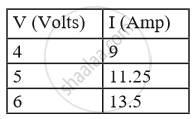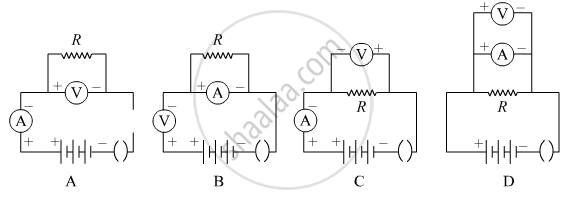Advertisements
Advertisements
प्रश्न
What would you suggest to a student if while performing an experiment he finds that the pointer/needle of the ammeter and voltmeter do not coincide with the zero marks on the scales when the circuit is open? No extra ammeter/voltmeter is available in the laboratory.
उत्तर
This is called the zero error of the scale of ammeter or voltmeter. If there is a zero error, then this error is subtracted from the value that depicts when the circuit is closed, otherwise, the accurate current or potential difference will not be recorded.
APPEARS IN
संबंधित प्रश्न
The values of current I flowing in a given resistor for the corresponding values of potential difference V across the resistor are given below:
| I (amperes) | 0.5 | 1.0 | 2.0 | 3.0 | 4.0 |
| V (volts) | 1.6 | 3.4 | 6.7 | 10.2 | 13.2 |
Plot a graph between V and I and calculate the resistance of that resistor.
Calculate the work done in moving a charge of 4 coulombs from a point at 220 volts to another point at 230 volts.
Name a device which helps to maintain potential difference across a conductor (say, a bulb).
The p.d. across a lamp is 12 V. How many joules of electrical energy are changed into heat and light when: a current of 2 A flows through it for 10 s?
The following table shows current in Amperes and potential difference in Volts.
What will be the nature of the graph between the current and potential difference? (Do not draw a graph.)

Which one of the following is the correct set-up for studying the dependence of the current on the potential difference across a resistor and why?

Potential near a charge is the measure of its ______ to bring a positive charge at that point.
______ is work done per unit charge.
Electric potential is a measure of the ______ on the unit positive charge to bring it to that point against all electrical forces.
